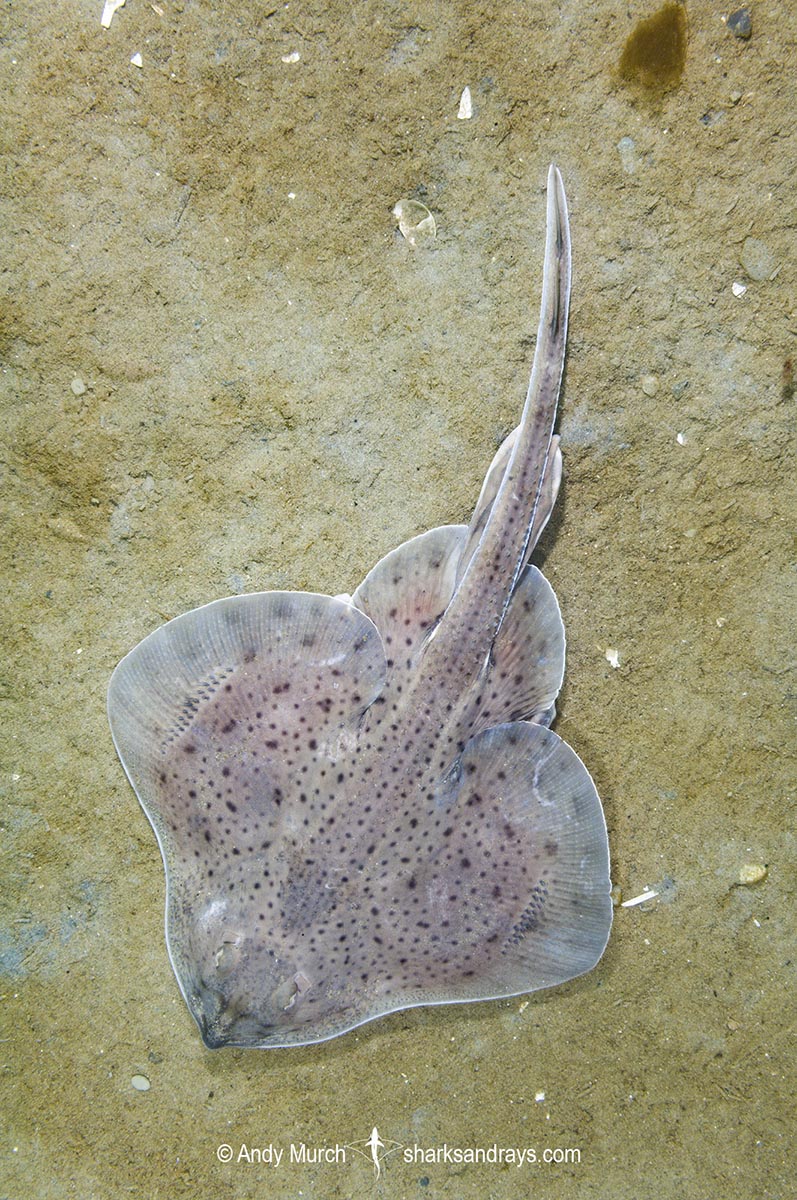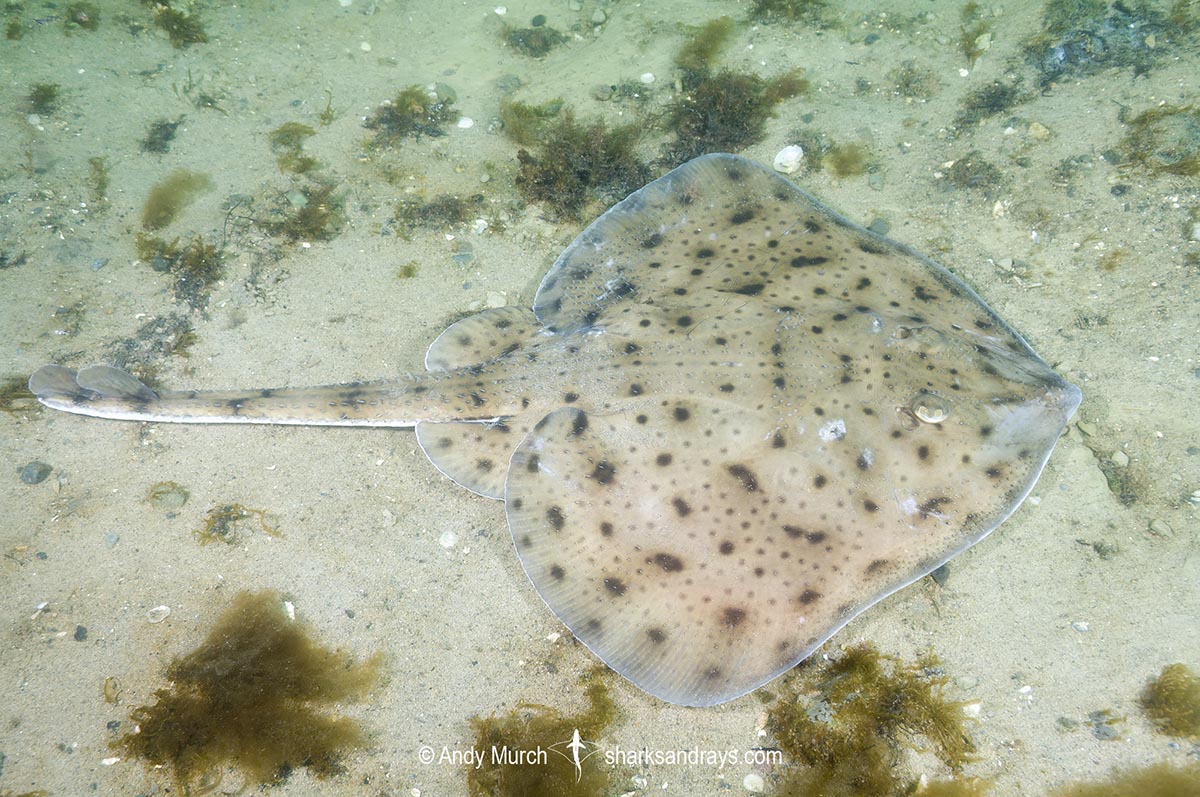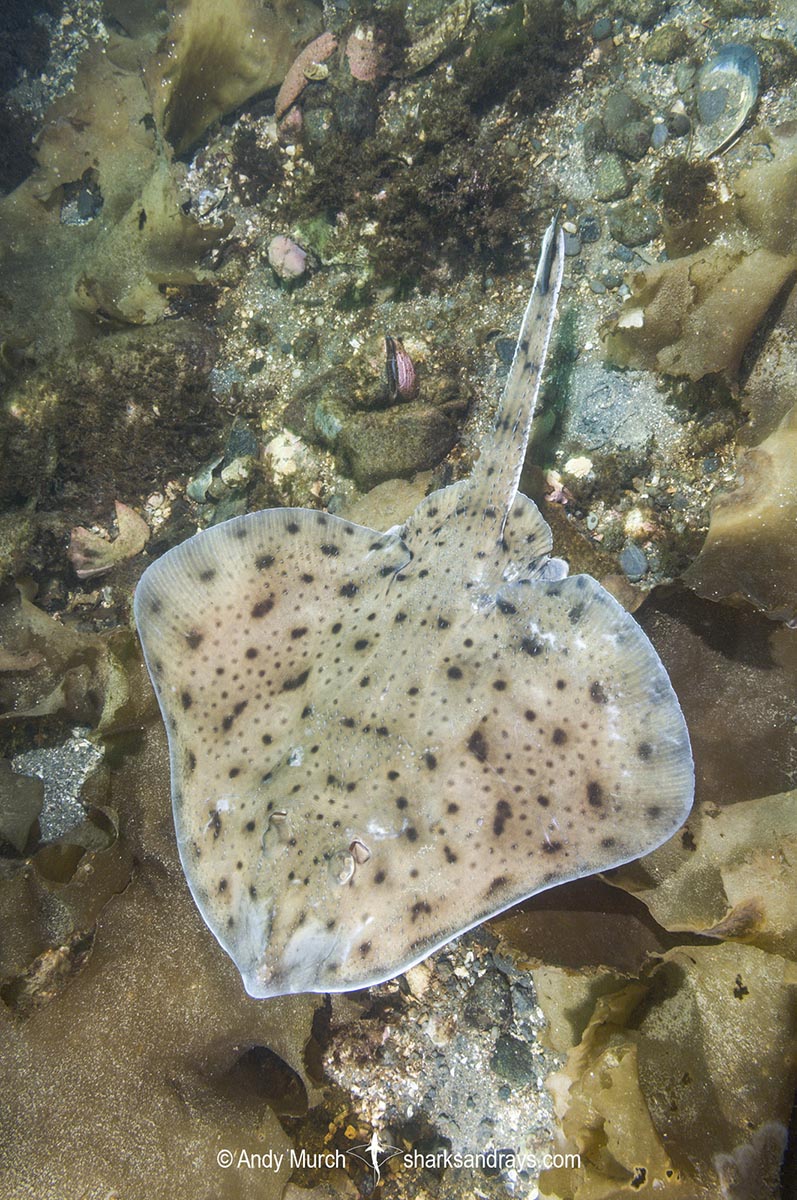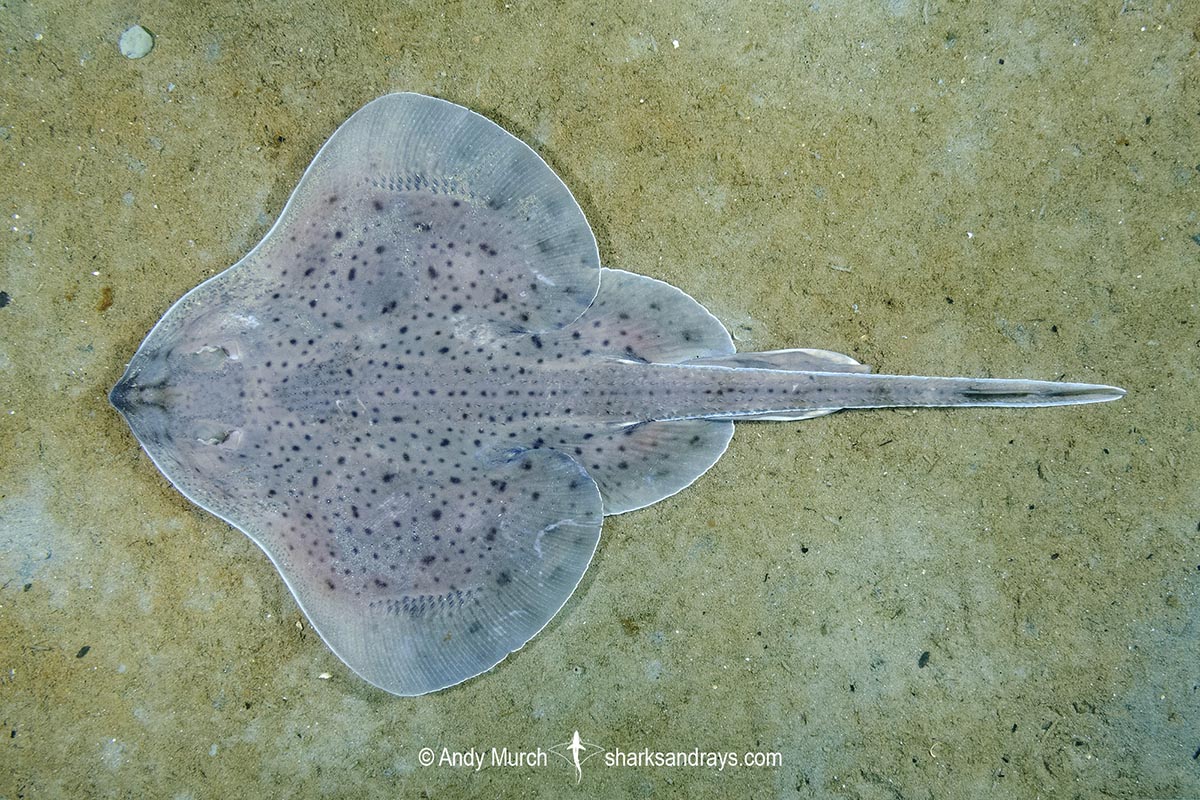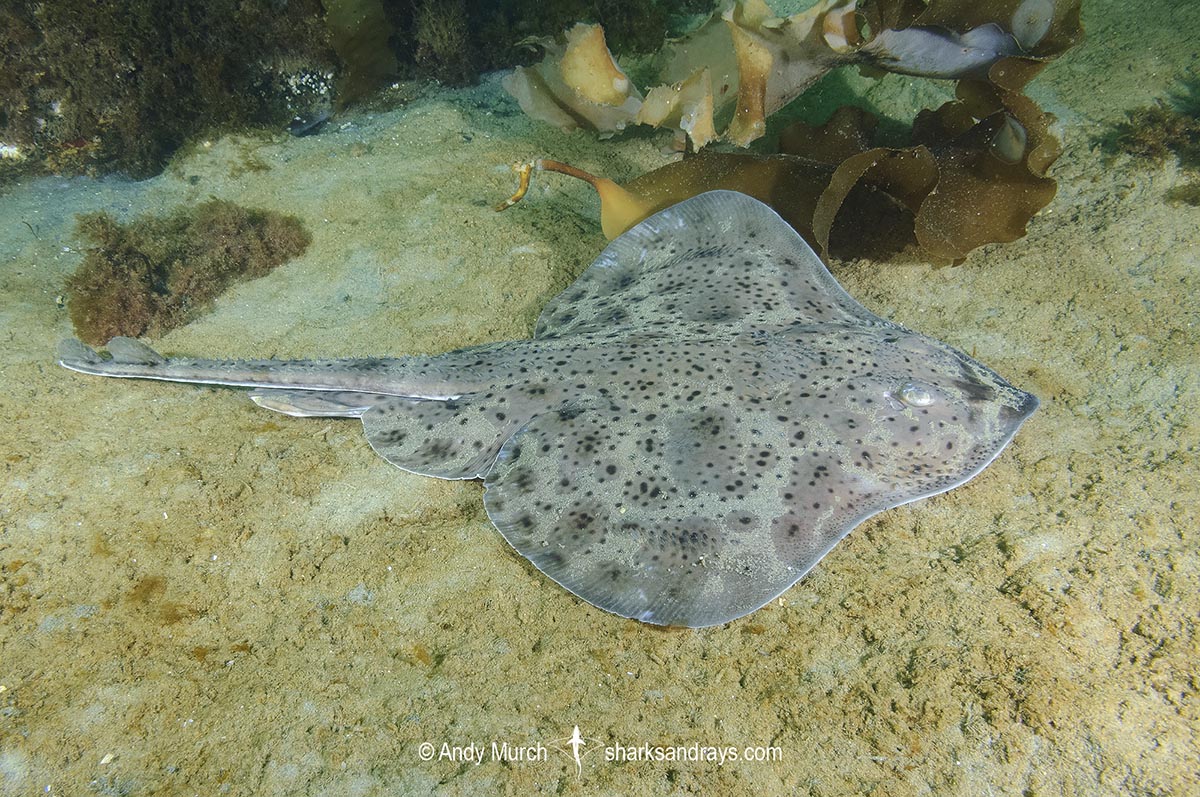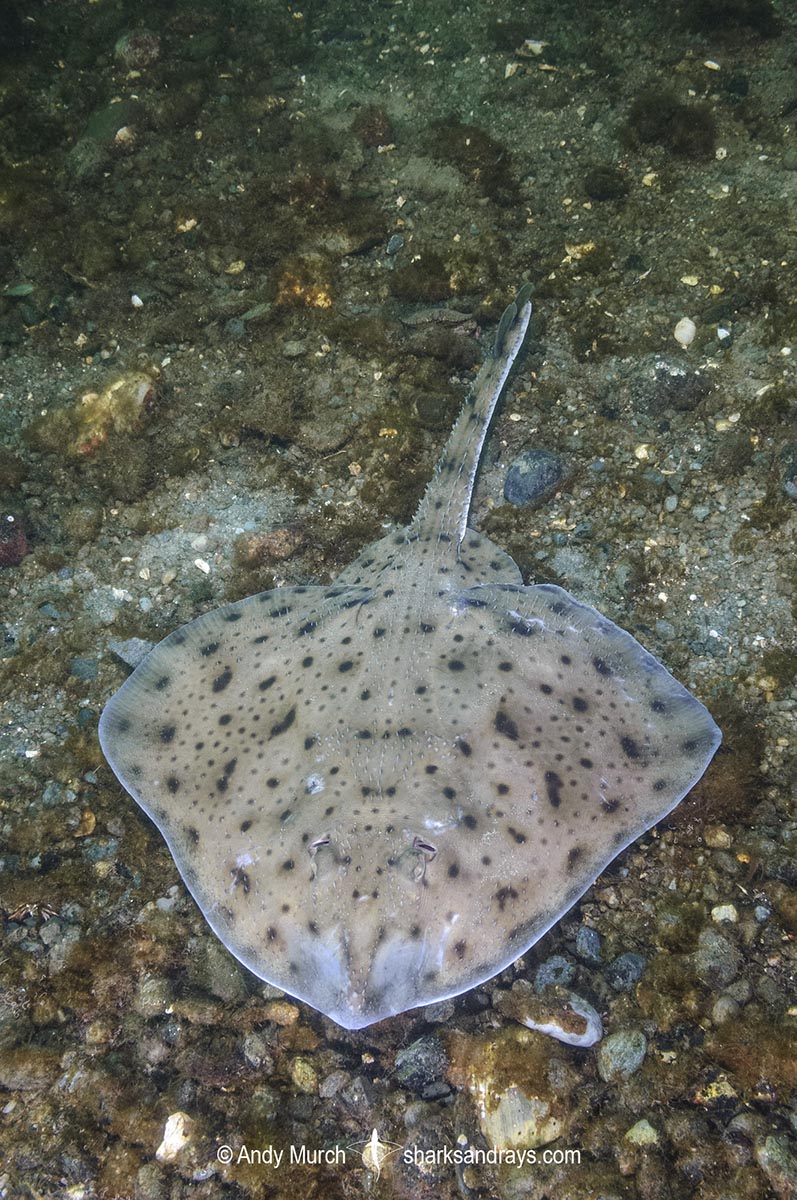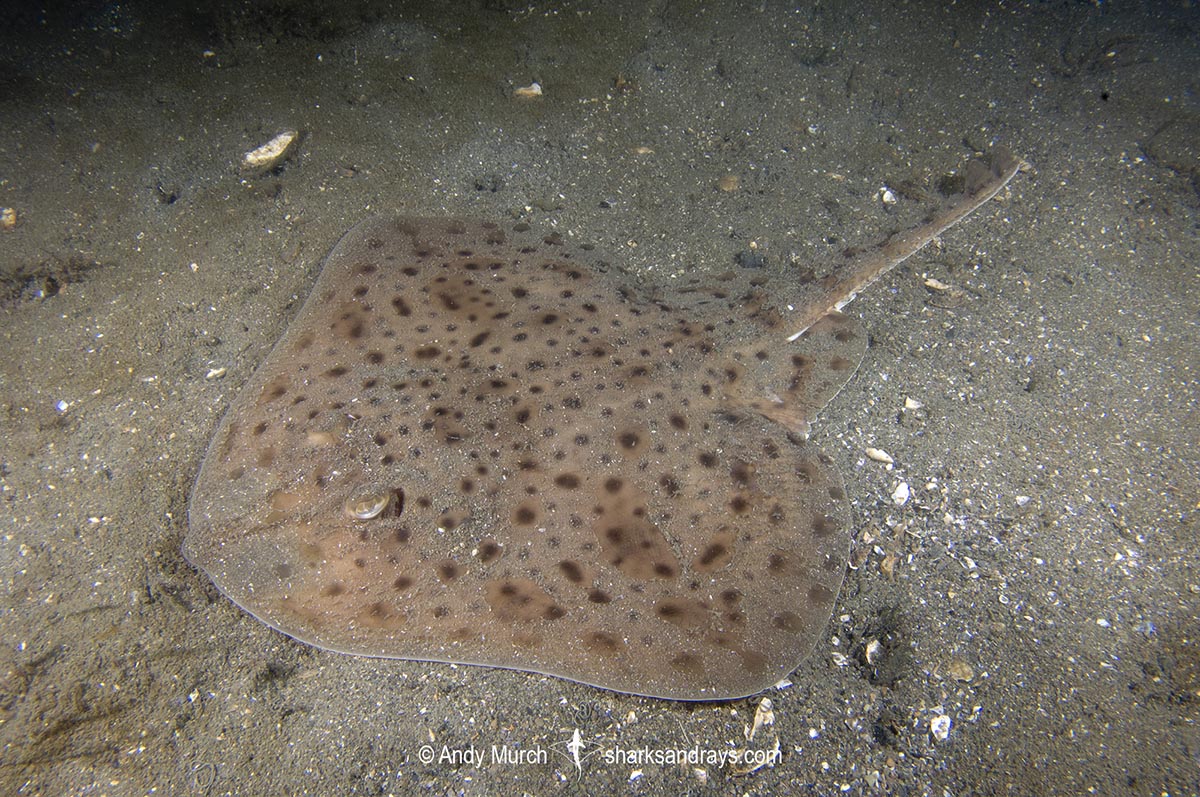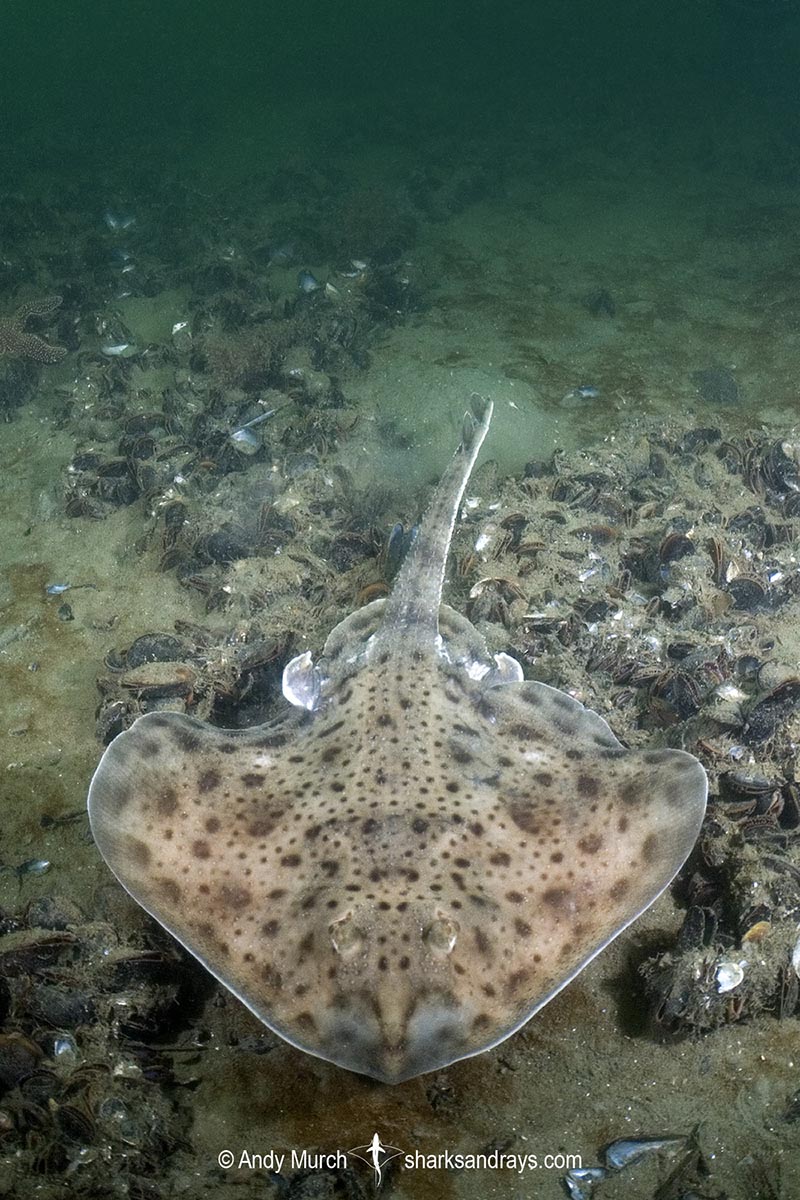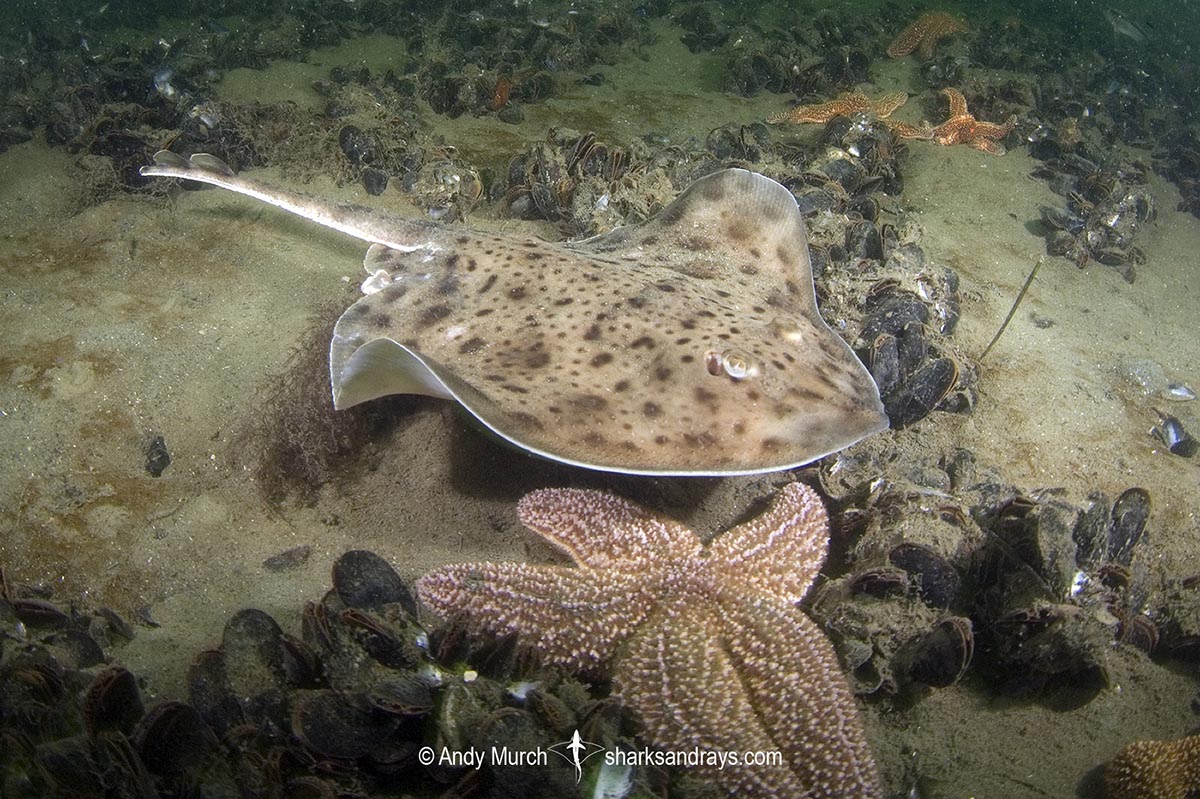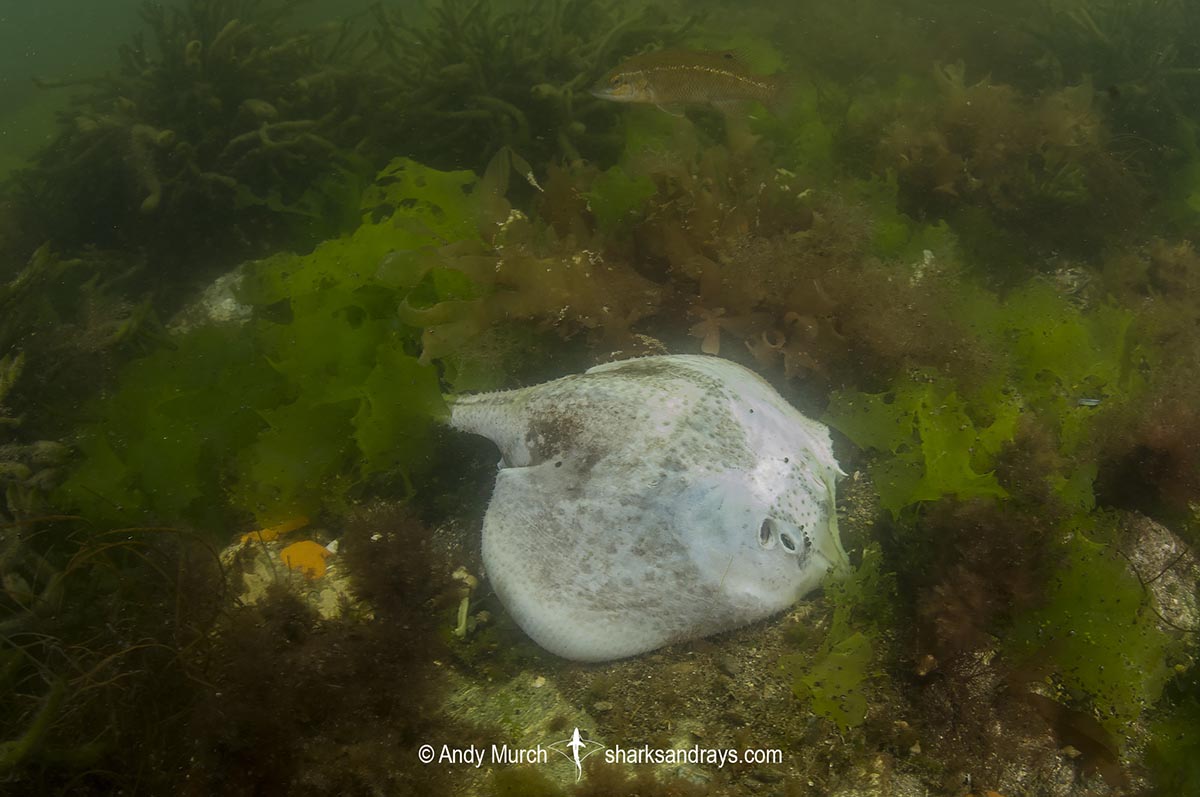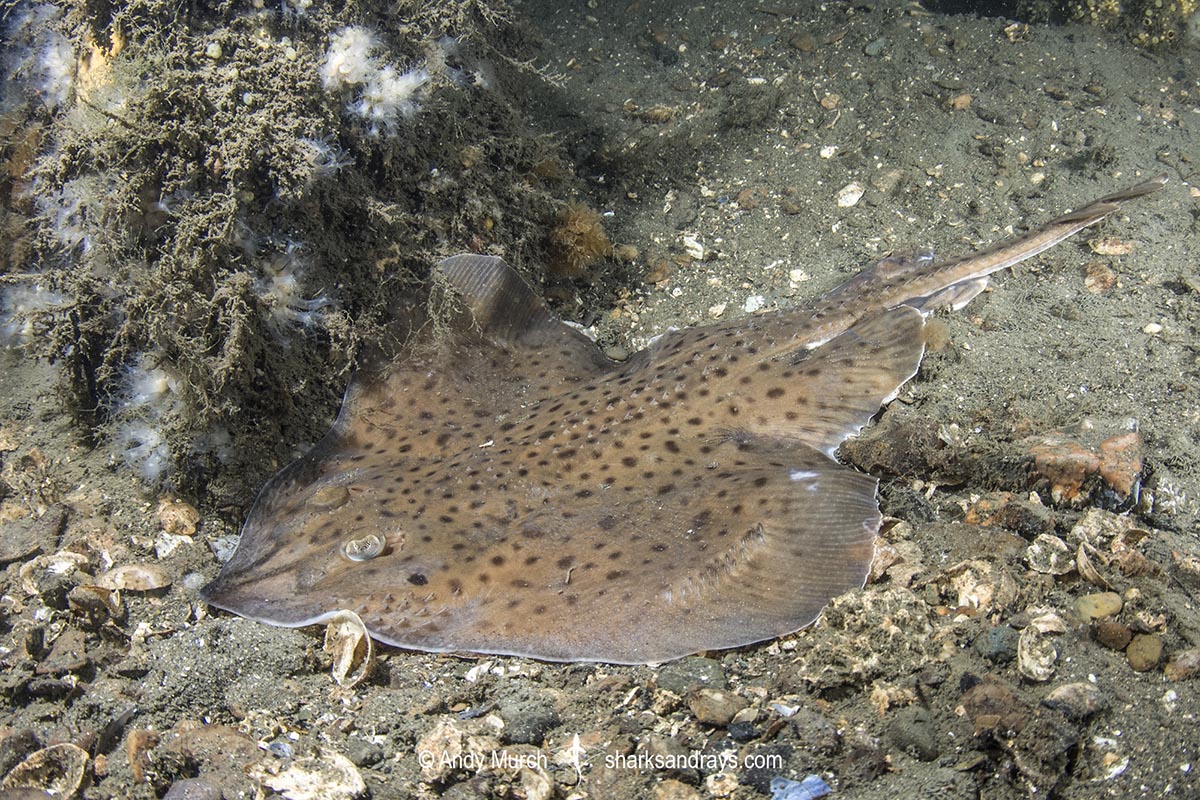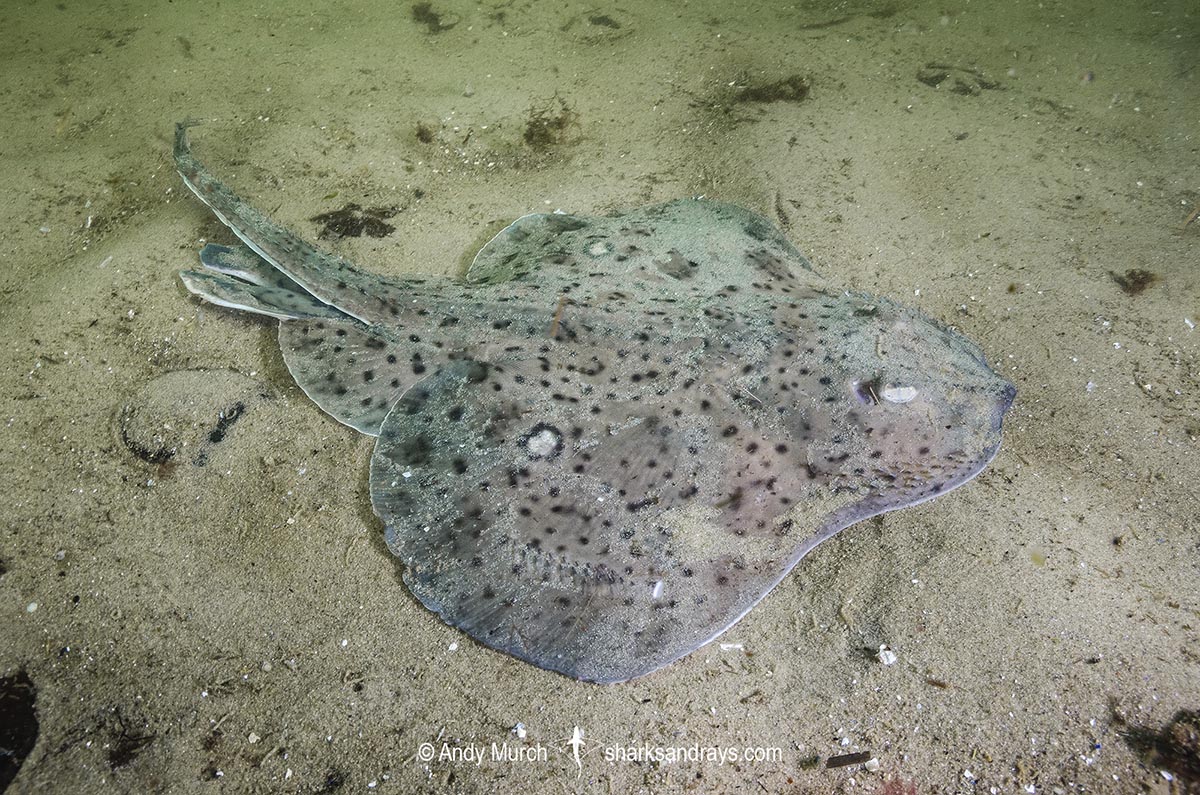Common names
Little Skate.
Binomial
Leucoraja erinaceas.
Synonyms
Leucoraja erinacea, Raia erinacea, Raja erinacea, Raja erinaceus.
Identification
A medium-sized skate with a heart-shaped (adult males) or rounded kite-shaped (juveniles/females) disc. Disc width 1.2-1.3 x disc length. Snout obtusely angular with a slightly protruding tip. Snout length 2.7-2.8 x orbit length. Anterior margins of pectoral fins weakly convex; double convex with central concavity in adult males. Pectoral apices narrowly or broadly rounded. Dorsal surface without small denticles. Dense patches of thorns present on snout, around eyes, nape, disc margin, and in a strip along either side of midline but absent or indistinct on centre line. Tail with 3-5 pre-dorsal thorn rows, median row indistinct in adults. Pelvic fins large, weakly notched. Anterior pelvic lobe much shorter than posterior lobe. Tail tapers gradually to tip. Dorsal fins confluent and broadly rounded.
Colour
Dorsum light brown, grey-brown, or pinkish-brown with numerous small dark spots that sometimes form vague rosettes but very rarely form distinct ocelli. Ventrum white, sometimes with irregular dusky blotches.
Size
Maximum length 62cm. Length at hatching 8-10cm.
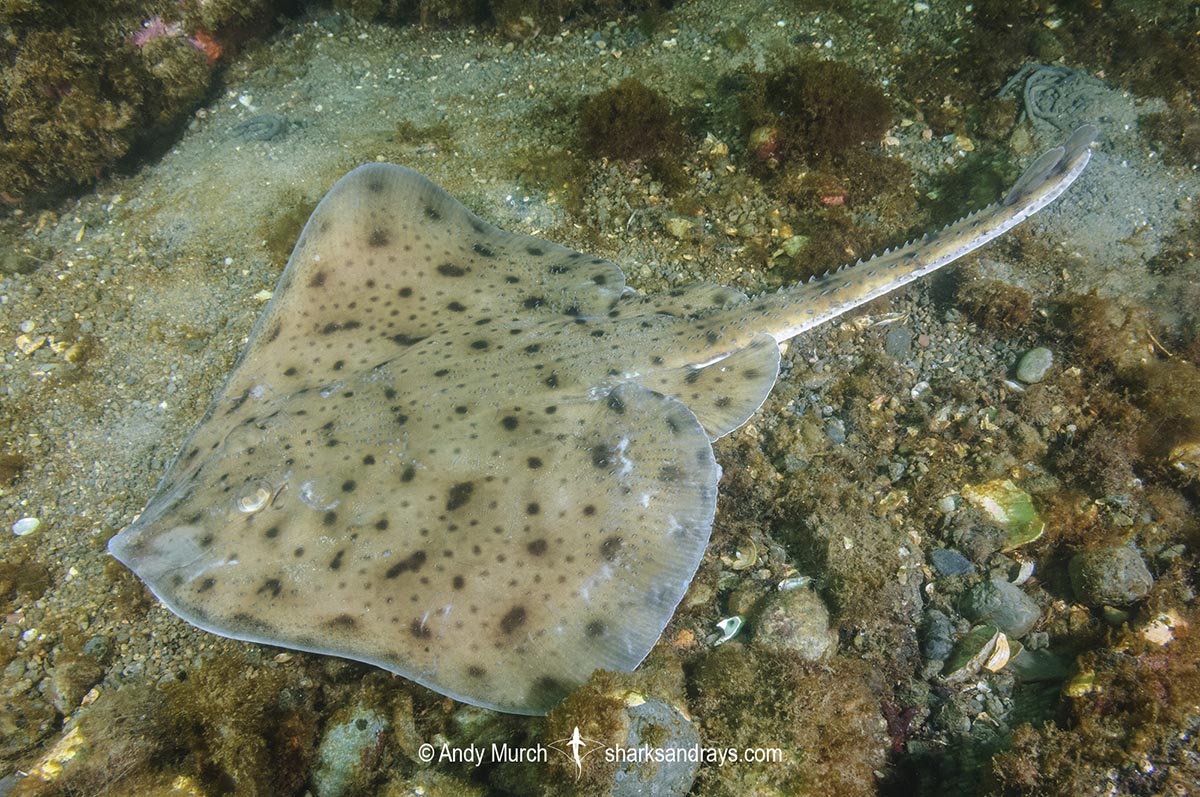
Conservation Status
LEAST CONCERN
In the USA, the Little Skate is targeted for bait in the lobster fishery. In Canada it is discarded with a moderate post release mortality rate in trawl fisheries except the scallop[ trawl fishery where it rarely survives capture.
There is no evidence of declines in the little skate population.
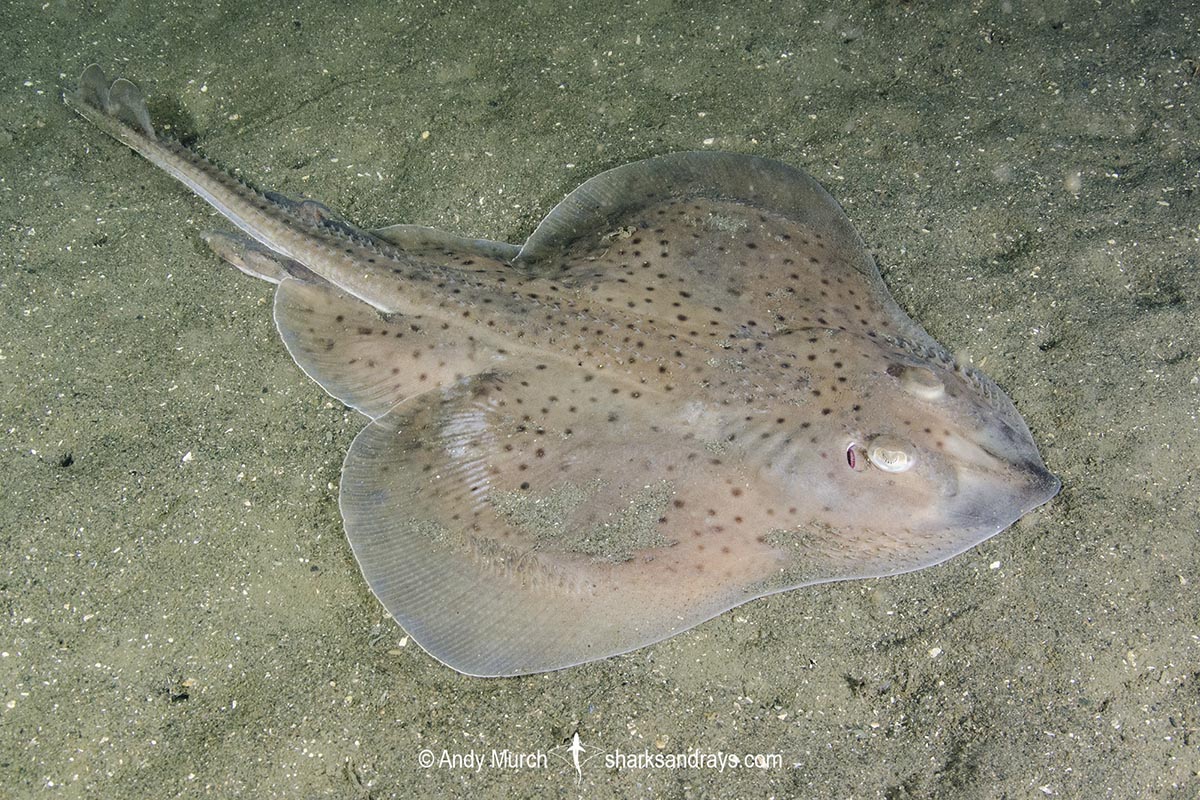
Habitat
Temperate seas. Demersal on sand or gravel substrates, occasionally on mud. From 10-110m, possibly much deeper.
Distribution
Northwest Atlantic. Found from Cape Hatteras, USA to the Grand Banks and northeast Newfoundland, Canada.
Reproduction
Oviparous. Females produce 28–33 eggs per year. Hatching occurs after 9–12 months.
Diet
Little skates feed mostly on crustaceans and small bony fishes.
Behavior
Enters shallow bays in New England during the summer months. When pursued, little skates will dash forward for a short distance and quickly bury themselves under the sand by rapidly fluttering their pectoral fins.
Reaction to divers
Fairly docile. Little skates will remain motionless partially covered in sand unless closely approached. Once threatened, little skates usually swim away slowly and then dash forward and resettle in a cloud of sand that conceals their exact position.
Diving logistics
Little skates are quite common off of shallow bays in New England during the summer months.
One good spot to encounter them is at Back Beach in Rockport on the Cape Ann Peninsula, Massachusetts. I have encountered them there in September but earlier in the summer the same area was inhabited by Winter Skates. Diving off Back Beach is a simple matter of walking in off the beach and kicking out while keeping a close eye on the sand. Occasionally skates rest on top of the kelp in which case they are far easier to spot.
What’s new
View our full list of updates
Similar species
Winter Skate Quite similar in shape and coloration but distinguishable by one or more white centred ocelli on each pectoral fin.

